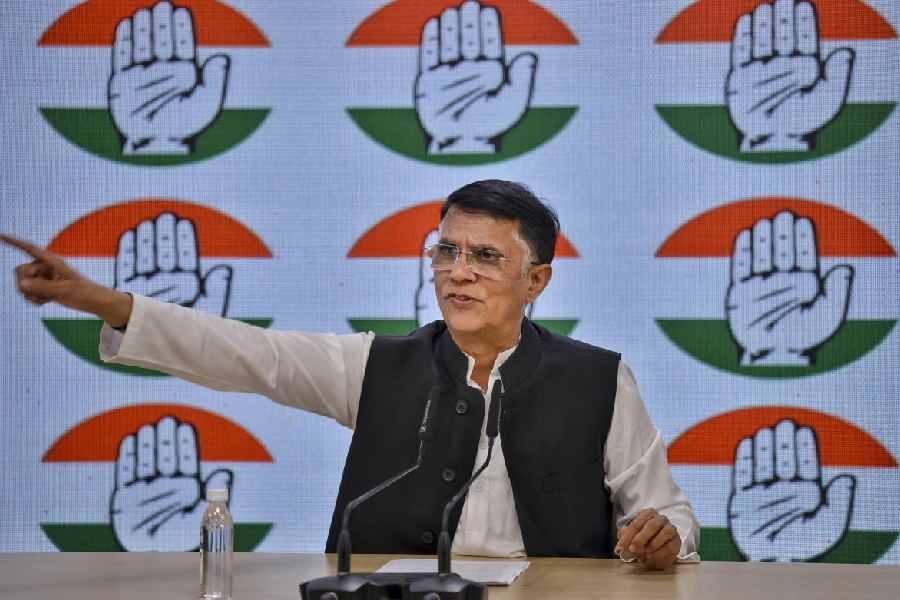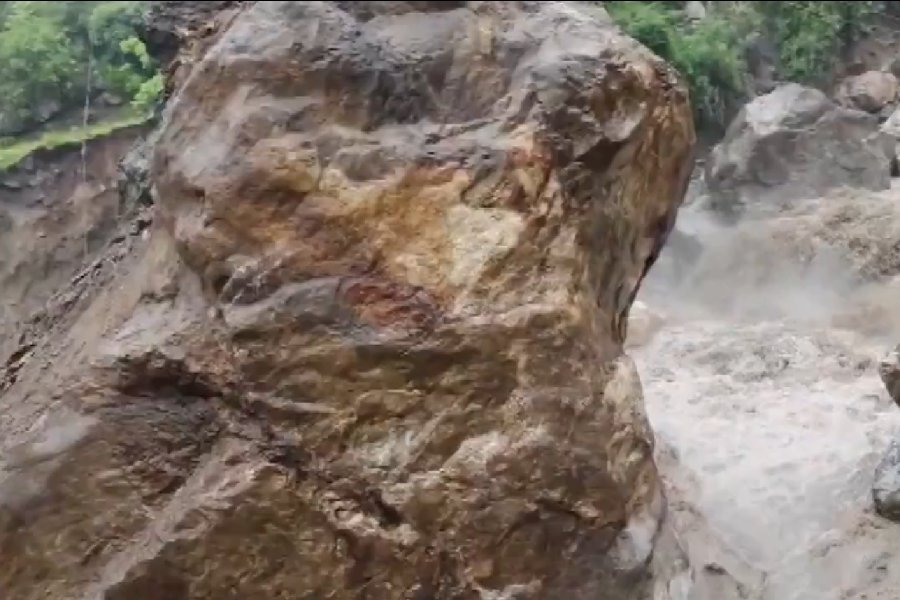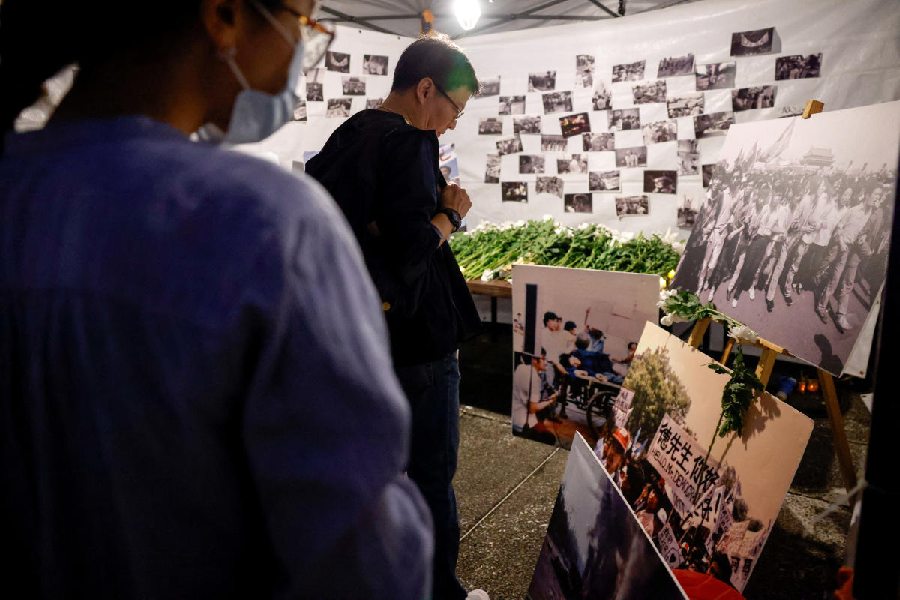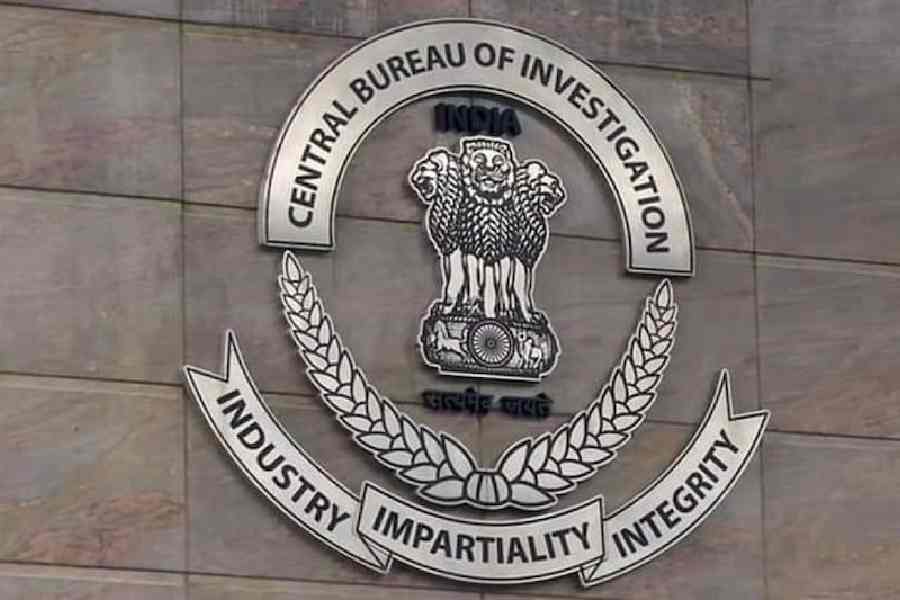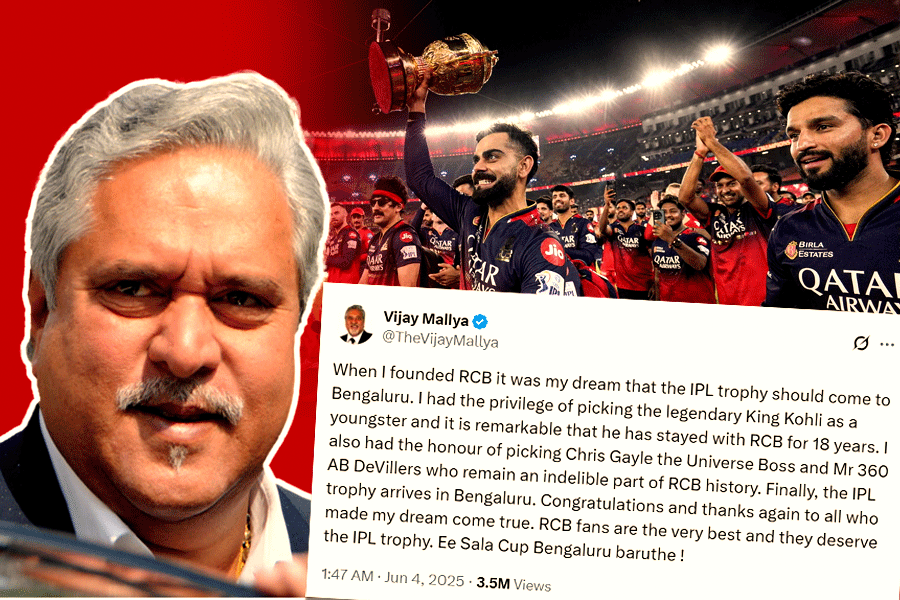 |
| A massage bed at The Gateway Ayurveda Centre |
A bearded Vasco da Gama looks at me disapprovingly from an oil painting. Tucked in a suite named after him at The Gateway, Calicut, all I am craving is the bed. My aching back, shoulders and limbs have been kneaded so well for an hour at the hotel’s Ayurveda centre that a blissful deep sleep is closing in on me.
The herb-infused oil massage with warm rice potlis was prescribed by Dr Valsaladevi K., the medical officer at The Gateway Ayurveda Centre, after studying my prakriti.
“The basic concept of Ayurveda is that each person is born with a unique constitution, which is called prakriti. When the prakriti is in imbalance, you have diseases. Ayurveda looks into correcting that imbalance,” Valsaladevi explains over breakfast. Our table looks out to a serene blue swimming pool lined by shrubs and trees.
It helps that The Gateway, Calicut, feels more like a wellness retreat than a stopover for busy executives. The quiet, languid vibe lets you settle into the new — and sadly fleeting — lifestyle specially tailored for you by the Ayurveda physician; it’s usually a combination of massage, herbal medicine for ingestion, yoga, meditation and a customised diet.
Run by Ayushman Ayurveda Trust Coimbatore, The Gateway Ayurveda Centre offers packages of 7, 15, 21 and 35 days. You can book one for some much-needed self-pampering, or to treat a host of health issues including arthritis, rheumatism, spondylitis, backache, migraine, obesity, stress, insomnia, osteoarthritis, psoriasis and paralysis.
“Ayurveda puts greater emphasis on preserving the body. It is a two-step process of purification and rejuvenation,” says Valsaladevi, adding that monsoon is the ideal season to go for treatment. “That’s when the water is impure and our body is also low on energy. In Ayurveda, June 1-15 is the period for purification; mid-June to end-June, which is the classical monsoon period, is for rejuvenation.”
A word of caution: do not plan to go gallivanting around town if you sign up for one of the longer packages. Some treatments will need you to stay indoors and stir as little as possible. “For instance, the 21-day package is intense treatment. The body goes into a complete halting stage. You can’t strain, you have to rest as much as possible.”
A few guests are lounging on the deck chairs by the pool, some are swimming a few laps. That’s pretty much the maximum strain one is recommended.
Back in the room, I squint at Vasco da Gama and struggle to shake off the stupor. It would be a shame not to check out the Portuguese explorer’s contribution to the port city of Calicut, now renamed Kozhikode.
For the Ayurveda packages, look up gateway.calicut@tajhotels.com
 |
| The swimming pool |
Tongue-twister
 |
Vegetarian food for seven days on the trot? Uh-oh! While I wasn’t mentally prepared for this stripped-down diet in a beach town, I also had no idea of what executive chef Salinkumar was sending my way — a fare so delicious that I still remember its taste, months on. Neat, clean flavours, light on the palate and a texture that teases the tastebuds.
Salinkumar cooked a lunch with the same veggies and ingredients in four styles — North Indian, South Indian, Chinese and Continental. Each tasted distinctly different on the tongue. In all four styles, he stuck to the Ayurvedic principles of cooking.
Later, his sous chef revealed a few tricks at a demo. He made Steamed Kofta with carrots, replacing the tomato gravy (discouraged in Ayurveda) with boiled moong dal and boiled onion paste. As they say, necessity is the mother of invention.
Mouthful of Moplah
 |
The strong cultural exchange between Yemenis and the Malabar people resulted in the robust cuisine called Moplah, or Mappila. The food is characterised by a generous use of coconut, and Arabic and Indian spices. My Moplah dinner had Meen Mulakittathu, a thick fish dish with raw mango, chilli and turmeric, which I had with fish biryani cooked with kaima rice; and Erachi Varattiyathu, a semi-dry tenderloin preparation, a match made in heaven with Nice Pathiri, roasted bread made with rice flour.
The Beachfront walk
The retreating monsoon is having one last tango with Calicut. A cheery sunny day has turned into a dark menacing afternoon, and my plans to go for a walk along the beach with Mr K. Mohan are shelved.
Nevertheless, we meet in the hotel lobby and start chatting about Mr Mohan’s curious passion of unearthing the complex, colourful history of Calicut. His eyes twinkle as he talks about how Vasco da Gama’s ship anchored at a nearby spot quite by chance in 1498; of Zamorin, the Hindu kings who ruled Calicut since the 12th century; about Yemeni traders sailing in, looking for spices and medicinal herbs, and juicy stories of their marital arrangements with the local Nair-Namboodiri girls.
On a clear day, Mr Mohan — a member of Intach, Calicut chapter, and an untiring explorer — conducts the Historical Walk 1935 Beachfront, with his bag of stories.
I am itching to hit the road despite the downpour and Mr Mohan smiles as if there couldn’t have been better news. We have two big umbrellas and a car to drive us to the vantage points.
The beachfront seamlessly blends the port city’s European legacy and Malabar roots. On one side is the Arabian Sea, lashing the boulders below the paved road. Here ships loaded with spices from Wayanad Hills are leaving for some of the biggest ports in the world.
The other flank is dotted by trading establishments and bungalows that once belonged to the English, Scottish, Italians, Portuguese and Dutch, land owned by the Kutch Memons, the rundown warehouses of Yemeni traders and coir godowns of the Gujaratis.
Holding his umbrella against the windy rain, Mr Mohan wistfully looks at this stretch. Highrises are jostling with the heritage buildings for space.
But today, nature is kind. The grey skies have cast a smoky screen over sea and land, bleeding out the bright colours of the upstart present like an Instagram filter.
Our car weaves its way into Kuttichira, the residential area of Moplahs, with a clutch of mosques that are architectural marvels in themselves. Dodging puddles and motorcyclists as best as we can, we amble into the lanes and the unique world of Moplahs, a community formed through the marriage between Yemeni traders and local Malabar girls, through which the lives of Muslims and Hindus are to this day intertwined in this beautiful port town.
“You see, the Moplahs have a strong matrilineal culture. Here the girls inherit all the property and so the nameplates of all the houses bear the women’s names,” Mr Mohan points out. He also shows me how by taking one look at the way the window curtains are drawn, you can figure out if the ladies of the house are at home or visiting their husbands in the Arab world!
Heading back towards the car, Mr Mohan stops by a shack frying heaps of banana chips in coconut oil. The next day is Onam, when the Moplahs and Hindus of Calicut will get together to celebrate the biggest festival of Kerala.
 |
 |
| (Above) The canal, now a ditch, was once reportedly used by Vasco da Gama to sail up to the Matri Dei Cathedral (top) |
 |
| Miskhal mosque in Kuttichira |
In an antique land
 |
| Ship lamps and other showpieces at Antique Gallery |
Hopping from one antique shop to another in Vadagara — about an-hour-and-a-half’s drive from Calicut — I remembered Roald Dahl’s delightfully wicked story, Parson’s Pleasure.
The “parson”, Mr Boggis, is actually an antique dealer in furniture, who surreptitiously scans old houses in the English countryside for gems that might be sitting ugly and unappreciated at some farmer’s barn.
For years, these shops in Vadagara have acquired beautiful, old furniture from Kerala homes and fetched a fortune in the antique market. The two-storeyed Antique Gallery, where my guide Janaki and I have spent an hour pottering about with our eyes popping out, is stuffed with some exquisite pieces.
Chandeliers of Belgian glass, grandfather clocks, ship lamps, gramophones, crockery, door knobs and Japanese tiles to centuries-old dining table sets, dressers, beds, almirahs with mother of pearl inlay, divans, swings and chests made of rosewood and teakwood, showing great ingenuity and craftsmanship.
At the back of the shop is a large shed where many rundown chairs are awaiting a remodelling. “These would be scraped, polished and given a fresh coat of paint. If a body part is missing, the carpenters fix that too, in keeping with the original design,” says Suneer N.V.P. He and his brother Nabeel have got their father’s eye for spotting a work of art and restoring the piece of junk to its former glory.
“Antique Gallery was set up by my father 25 years ago. He had started by collecting old furniture from the big houses in Kannur. Plywood was making inroads back then, so many people wanted to switch and sold off their old furniture,” says Suneer. “Of course, they don’t sell anymore,” he laughs. “Now we source most of the items from Gujarat and from your city,” Suneer chuckles. “The Calcutta four-poster bed is a hot-selling item!” Now that would please the parson.
The way of the warrior
 |
| A Kalari performance at CVN Kalari, Nadakav |
I held my breath and crouched as the Kalari fighters got too close for comfort. Locked in a fierce one-to-one combat, their footwork covered the entire carpet area of the room, their urumis clanking in the air and producing sparks in swift, bold strikes. Even the minutest misdirected swipe could be life-threatening for the fighters.
“The objective of Kalaripayattu is to defend oneself, not to kill the opponent. An advanced Kalari student knows all the marma (vital) points in the body where any strike can be fatal,” said Rugesh, a senior student at CVN Kalari, Nadakav, stretching out an arm to shield me from another lunge of the urumi — a long metal blade that you might have seen Shah Rukh Khan brandishing at Danny Denzongpa in the film Asoka.
CVN Kalari, Nadakav, is one of the oldest Kalaripayattu centres in Kerala, teaching the martial art form in the traditional gurukul system. The red-walled room where we have gathered to watch a few Kalari performances is lined by various sharp-edged weapons, which the fighters pick up at the guru’s nod. In one corner is the altar of Shiva-Shakti. Each face-off begins only after the fighters have prayed to the presiding deities and touched the guru’s feet. Among the rows of boys was a shy little girl who gave her gang a run for their stamina and agility.
“This is a martial art form used in warfare. It was first practiced by the sage Parashuram and is characteristic of the northern part of Kerala,” Rugesh added.
The rigorous training is followed by Kalari Marma Chikitsa, as the body of a Kalari trainee undergoes a lot of stress and strain. These treatments are now being offered to the public too, aimed at relaxation and rejuvenation.
The centre offers crash courses in Kalari for those who might want to give it a shot. And yes, Shah Rukh Khan did learn his moves for Asoka at CVN Kalari.
Reshmi Sengupta


